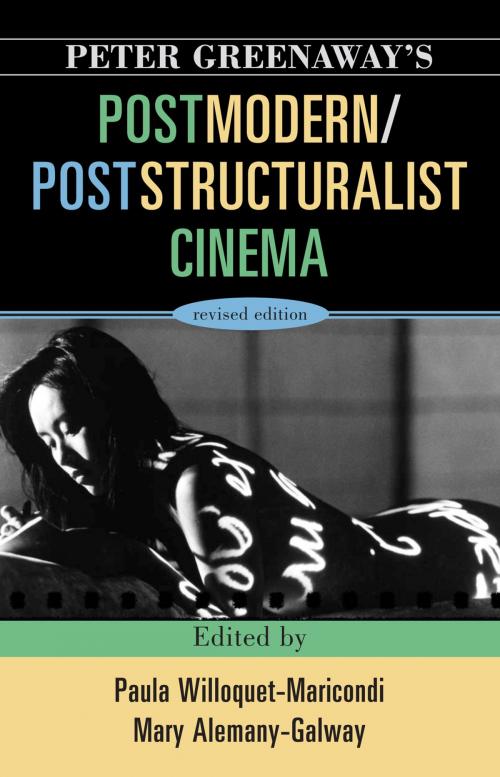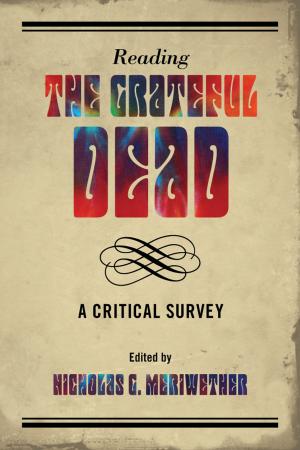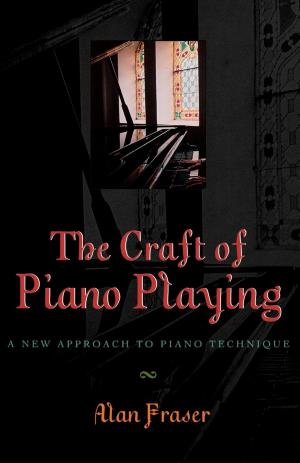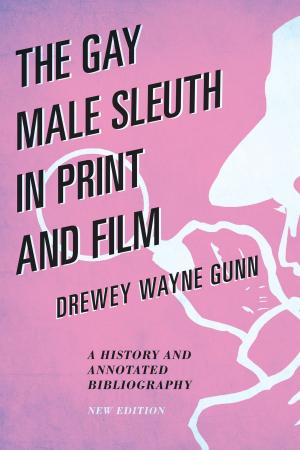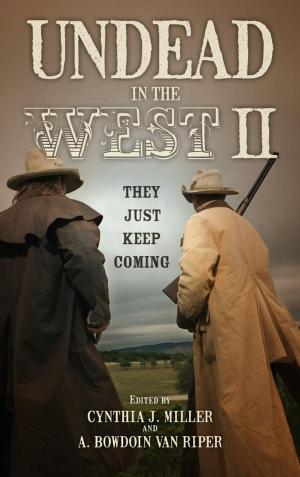Peter Greenaway's Postmodern / Poststructuralist Cinema
Nonfiction, Entertainment, Film, Direction & Production, Performing Arts, Art & Architecture, General Art, Criticism| Author: | ISBN: | 9780810862272 | |
| Publisher: | Scarecrow Press | Publication: | July 17, 2008 |
| Imprint: | Scarecrow Press | Language: | English |
| Author: | |
| ISBN: | 9780810862272 |
| Publisher: | Scarecrow Press |
| Publication: | July 17, 2008 |
| Imprint: | Scarecrow Press |
| Language: | English |
Since the 1960s, British multi-media artist Peter Greenaway has shocked and intrigued audiences with his avant-garde approach to filmmaking and other artistic ventures. From early experimental films to provocative features, Greenaway has deployed strategies associated with structuralist cinema, only to challenge or critique the very limits of that cinema and of film in general. In this collection of essays, scholars from a variety of disciplines explore various postmodern and poststructuralist aspects of Greenaway's films, starting with his early shorts and delving into his feature-length works, including The Draughtman's Contract, The Belly of an Architect, A Zed and Two Noughts, The Cook, the Thief, His Wife and Her Lover, The Baby of M%con, and The Pillow Book. Other artistic productions, including his paintings and installations are also discussed. These essays examine the filmmaker's position within British and avant-garde cinema and his interest in constructing and deconstructing representational systems. In the years since the first edition of this book, Greenaway has enjoyed continued success in creating hybridized media projects for the stage and screen, as evidenced by additional essays for this revised edition. A new chapter addresses how Dutch political events and Dutch art have been crucial in shaping Greenaway's aesthetic, focusing on The Draughtsman's Contract, the 1991 opera Writing to Vermeer, and Nightwatching, the audio-visual installation and 2007 film of the same name, which were inspired by Rembrandt's Night Watch. Also new to this collection is an essay that examines Greenaway's most ambitious endeavor to date, The Tulse Luper Suitcases, which exists as four feature films, multiple websites, an online game, several books and installations, and a number of theatrical events. Peter Greenaway's Postmodern/Poststructuralist Cinema, Revised Edition explores the cultural, historical, and philosophical implications of this hybrid artist whose paintings, drawings, exhibitions, installations, and operatic productions are an intrinsic part of his work in film. This collection of diverse essays, which includes two texts by Greenaway, two interviews with the director, and a revised filmography, will interest students, teachers, critics and lovers of both postmodern art and cinema.
Since the 1960s, British multi-media artist Peter Greenaway has shocked and intrigued audiences with his avant-garde approach to filmmaking and other artistic ventures. From early experimental films to provocative features, Greenaway has deployed strategies associated with structuralist cinema, only to challenge or critique the very limits of that cinema and of film in general. In this collection of essays, scholars from a variety of disciplines explore various postmodern and poststructuralist aspects of Greenaway's films, starting with his early shorts and delving into his feature-length works, including The Draughtman's Contract, The Belly of an Architect, A Zed and Two Noughts, The Cook, the Thief, His Wife and Her Lover, The Baby of M%con, and The Pillow Book. Other artistic productions, including his paintings and installations are also discussed. These essays examine the filmmaker's position within British and avant-garde cinema and his interest in constructing and deconstructing representational systems. In the years since the first edition of this book, Greenaway has enjoyed continued success in creating hybridized media projects for the stage and screen, as evidenced by additional essays for this revised edition. A new chapter addresses how Dutch political events and Dutch art have been crucial in shaping Greenaway's aesthetic, focusing on The Draughtsman's Contract, the 1991 opera Writing to Vermeer, and Nightwatching, the audio-visual installation and 2007 film of the same name, which were inspired by Rembrandt's Night Watch. Also new to this collection is an essay that examines Greenaway's most ambitious endeavor to date, The Tulse Luper Suitcases, which exists as four feature films, multiple websites, an online game, several books and installations, and a number of theatrical events. Peter Greenaway's Postmodern/Poststructuralist Cinema, Revised Edition explores the cultural, historical, and philosophical implications of this hybrid artist whose paintings, drawings, exhibitions, installations, and operatic productions are an intrinsic part of his work in film. This collection of diverse essays, which includes two texts by Greenaway, two interviews with the director, and a revised filmography, will interest students, teachers, critics and lovers of both postmodern art and cinema.
